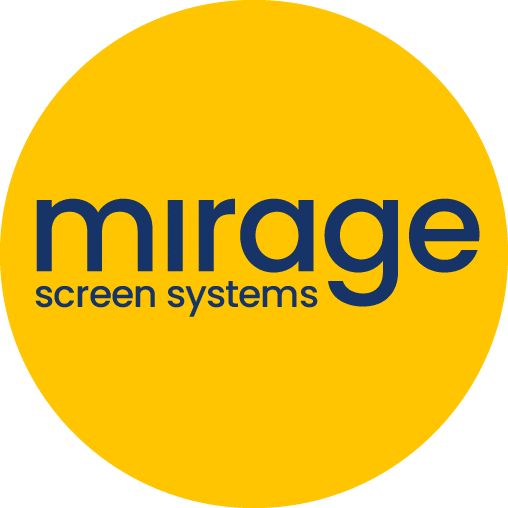The search landscape keeps on changing, and it changes fast. If your content and SEO strategies are still based on traditional techniques, you might be missing out on huge traffic potential, which can translate into increased revenue for your business. One significant change is Answer Engine Optimization (AEO). It calls for swift changes to your content strategy. In this blog, we’ll dive into the details of AEO, why it matters, and how to create content that ranks as an answer.
What is Answer Engine Optimization (AEO)?
Answer engine optimization (AEO) is the process of optimizing your content so that search engines and platforms can directly provide answers to users’ queries. AEO focuses on writing and reshaping your content so that search engines can deliver answers directly to users in the form of featured snippets and AI Overviews.
Why AEO Matters in 2026
AEO matters more than ever in 2026. Here’s why:
Growth of Generative AI and Conversational Search
2026 saw immense growth of generative AI and conversational search engines, particularly with the new Search Labs products by Google, including the AI Mode, and GPT-5, OpenAI’s new generative AI model. It’s high time for businesses and publishers to incorporate AEO into their content strategy to rank in AI search results.
The Decline of Traditional Organic Listings
Search engines like Google have been working on encouraging searchers to spend more time on their own platform for a long time. Rich results, featured snippets, AI overviews, and AI mode all have the same purpose: to respond to the users’ queries immediately instead of encouraging them to visit websites. As a result, there’s a decline in traditional organic listings.
User Behavior Trends: Zero-Click Searches
There has been a massive shift in user search behavior, with zero-click searches taking a huge chunk of search engine traffic. As a result, a keyword with a high search volume may not provide ranking websites with the same traffic potential. Users searching for that keyword are getting their answers right on the SERPs, which means they no longer need to visit websites.
How Answer Engines Work
Unlike traditional searches, answer engines work by pulling their responses from a vast database of content on the web instead of listing links and directing users through a search funnel. Here’s how they work:
AI Pulls Answers from Structured and Unstructured Content
AI pulls answers from structured and unstructured content across the web, including websites that do not rank on the first few pages of the search results. Content that is written to manipulate rankings will not work anymore. AI will solely focus on the content that best answers the users’ queries.
Sources Used
Since AI pulls its answers from a vast database of content present on the web, it may also cite content sources when presenting a summarized response to the users. This means that even if you are ranking on the third page of the SERPs, if your content is relevant, answer engines may cite your website as a source.
Why is AEO Challenging?
Since AEO is a fairly new concept, it can be challenging to implement. Below are a few key reasons why AEO is challenging.
Tracking Performance
Tracking CTRs, sessions, and events was easy when users were on your website. However, when your content, along with other sources, shows up as a part of a summarized response on answer engines, it can be challenging to identify how much weight and traffic is attributed to your website as compared to your competitors.
Optimizing for Different Answer Engines
There are various answer engines present on the web, such as ChatGPT, Perplexity, and Google Gemini. Each of these engines uses a different AI model with a different knowledge cutoff and query-answering technique. If you want to rank on several answer engines, it can be hard to create content that is relevant to all the answer engine models and their respective algorithms.
Core Elements of AEO Strategy
Although AEO can be challenging, it’s not impossible. Here are some core elements that need to be a part of your AEO strategy.
Structured Data and Schema Markup
Structured data and schema markup are crucial for AEO because they provide search engines with a clear understanding of your content. Schema markup can explicitly define entities, relationships, and data types on your web pages, enabling search engines to more accurately extract information and present it in rich snippets and directly answer user queries.
Featured Snippets and PAA (People Also Ask) Optimization
Optimizing for featured snippets and People Also Ask (PAA) boxes is a direct path to AEO success. Featured snippets provide concise answers directly at the top of search results, while PAA sections anticipate follow-up questions users might have. To capture these, content should directly answer common questions with clear, precise paragraphs.
Clear, Concise, and Authoritative Content
AEO completely relies on content that is exceptionally clear, concise, and authoritative. Answer engines prioritize content that directly answers user queries without ambiguity or excessive jargon. Establishing authority through well-researched information and expert insights builds trust with both users and search algorithms.
Topical Authority and Entity Optimization
Building topical authority involves demonstrating comprehensive knowledge across a specific subject area, creating a cluster of interconnected content that thoroughly covers all facets of a topic. Entity optimization focuses on clearly defining and linking to specific concepts or “entities” within your content, helping search engines understand the relationships between them.
Internal Linking and Question-Based Content Structure
Effective internal linking and question-based content structure are vital techniques for AEO because they help answer engines discover and understand the relationships between your content pieces, reinforcing your topical authority. Linking to related articles and relevant information within your site guides users and crawlers through a comprehensive learning journey.
How to Optimize Content to Rank in Answer Engines
Optimizing your content to rank in answer engines requires incorporating the best AEO practices. Here are a few key strategies to try:
Writing Content in Q&A Format
Writing content in a Q&A format increases your chances of ranking in answer engines. Instead of writing generic, vague content, each H2, H3, and FAQ on your webpage should raise a specific question and provide a unique solution.
Using Natural Language and Conversational Tone
Although AI has revolutionized how we create content, it still doesn’t compare to humans in language, tone, and writing style. Most answer engines are powered by AI, and they look for accurate, high-quality writing to develop responses to the users’ queries.
Optimizing Heading Structures
Optimizing heading structures is crucial for answer engine optimization (AEO) because answer engines, like Google’s featured snippets or AI Mode, often extract information directly from well-organized and clearly labeled sections of content.
Creating Answer-First Paragraphs
Creating answer-first paragraphs is a key strategy for Answer Engine Optimization (AEO). AEO focuses on optimizing content to directly answer user queries, so answer-first paragraphs are crucial if you want your content to appear in featured snippets, knowledge panels, and other direct answer formats on search engines.
Tools & Platforms That Support AEO
Mastering AEO requires using all the resources available to you. Below are a few tools and platforms that support AEO.
Tools for Schema Implementation
There are various tools that help you generate, test, validate, and implement schema markup, including:
- Schema.org
- Schema. dev’s Schema Builder
- Google’s Structured Data Markup Helper
- Google’s Rich Results Test tool
- JSON-LD Generator
- YoastSEO, Rank Math, and other WordPress plugins
Keyword Research Tools
Some popular keyword research tools you can use to optimize your content for AEO are:
- SEMrush
- Ahrefs
- Moz
- Google Keyword Planner
- Google Trends
- AnswerThePublic
These tools help you track question-based keywords and monitor content displayed in featured snippets and People Also Ask.
Monitoring Tools for Visibility in Answer Engines
Traditional SEO tools, such as Ahrefs, SEMrush, and Moz, have added AEO monitoring capabilities to track your website’s visibility in answer engines like ChatGPT, Google’s AI Overviews, Google’s AI Mode, and Perplexity. However, some new tools have emerged to specifically help websites with monitoring and tracking of their visibility in AI spaces. Some of these tools are:
- Writesonic AI Visibility Tool
- SE Ranking’s AEO Tool
- Surfer AI Tracker
- Rankability’s AI Analyzer
How AEO and SEO are Complementary (Not Competitive)
AEO and SEO can be used to complement each other rather than compete against each other. While they have different goals, they are both essential parts of a modern digital marketing strategy and work best when combined.
How AEO Improves SEO Efforts
Answer Engine Optimization (AEO) plays a crucial role in enhancing overall SEO efforts by helping your business adapt to the evolving search landscape. Traditional SEO often focuses on ranking for popular keywords, and AEO enhances this focus by helping you identify and target the most popular user queries.
Differences in Optimization Techniques
SEO mainly focuses on keyword-centric queries (often 1-3 words), while AEO involves optimizing for conversational questions and long-tail queries. SEO’s purpose is to increase organic rankings and click-through rates. By contrast, AEO focuses on providing the best direct answer to satisfy the query, even if it does not generate increased organic traffic.
When to Focus on AEO
It’s crucial to focus on AEO to stay competitive in AI searches and answer engines. AEO is essential for businesses whose customers frequently ask questions to find products, services, or solutions. This is particularly relevant in industries where customers conduct thorough research before making a purchase. Examples include:
- Professional Services: Legal firms, financial advisors, or consultants
- Healthcare and Wellness: Clinics, hospitals, or health product companies
- Complex Products: Software, machinery, or other technical goods
- B2B Companies: B2B companies whose clients are researching to find a reliable partner or a specific solution
The Future of AEO: What to Expect Beyond 2026
The future of answer engine optimization (AEO) will contribute to fundamental changes in how we think about search engine marketing. Beyond 2026, AEO is expected to become the dominant form of search marketing, with many traditional SEO practices being absorbed into this new concept.
Integration with Voice Search, Smart Assistants
With the popularity of voice-based search and smart assistants, it’s safe to assume that searches in the near future will be done with the help of voice and other smart technologies. This means that businesses are required to focus their content more on natural language, conversational tone, semantics, and contextual awareness, rather than just targeting keywords.
Autonomous Search Behaviours
Traditional SEO was built to target human users typing a query and clicking on a link. The entire process is reactive. Autonomous search, on the other hand, is proactive and machine-driven. It occurs when AI tools perform searches, synthesize information, and make decisions on behalf of a human user. This means that businesses must be proactive about their keyword research, content strategies, and optimization techniques.
Evolving Algorithms
Search engine and answer engine algorithms are continually evolving to provide users with the most relevant and accurate information. These ongoing updates are driven by advancements in artificial intelligence and machine learning, allowing search engines to better understand user intent and contextual nuances. It’s more important than ever for businesses to stay up to date with algorithm and AI updates.
Increasing Content Accuracy Standards
Content accuracy is now even more significant, especially with the rise of AI-powered answer engines. These engines rely on precise and verifiable data to provide direct answers to user queries. Therefore, publishers must meticulously fact-check and cite sources to ensure the information they present is 100% factual and accurate.
Frequently Asked Questions (FAQs)
AEO focuses on optimizing content to directly answer user queries within search engine results, particularly in featured snippets, chatbots, and rich snippets. In contrast, traditional SEO emphasizes ranking entire web pages for keywords. While both aim for search visibility, AEO prioritizes immediate answers over driving traffic to webpages. In contrast, traditional SEO often directs users to a full website experience.
Some common answer engines you should optimize your content for include Google’s AI Overviews, Google’s AI Mode, Bing Generative Search, Gemini, ChatGPT, and Perplexity.
Yes, small websites can significantly benefit from AEO. By focusing on providing direct, concise answers to user queries, smaller sites can achieve visibility in answer engine results, regardless of their domain authority. This strategy allows them to compete effectively with larger websites for valuable search real estate.
While AEO heavily focuses on informational content, its principles can extend to transactional queries. Optimizing for direct answers can enhance visibility for product pages or service offerings when users seek specific information that leads to a purchase. The goal is to provide concise, direct answers that satisfy the user’s intent, whether it’s informational or commercially driven.
You can use various tools to measure AEO success. Traditional SEO tools, such as Ahrefs, SEMrush, and Moz, have adapted to monitor answer engine optimization success. You can also use AI-specific tools like Writesonic’s AI Visibility Tool, SE Ranking’s AEO Tool, Surfer’s AI Tracker, and Rankability’s AI Analyzer. Some key metrics you need to track are mentions in answer results, featured snippet count, voice search share, and referral traffic from AI assistants.






















